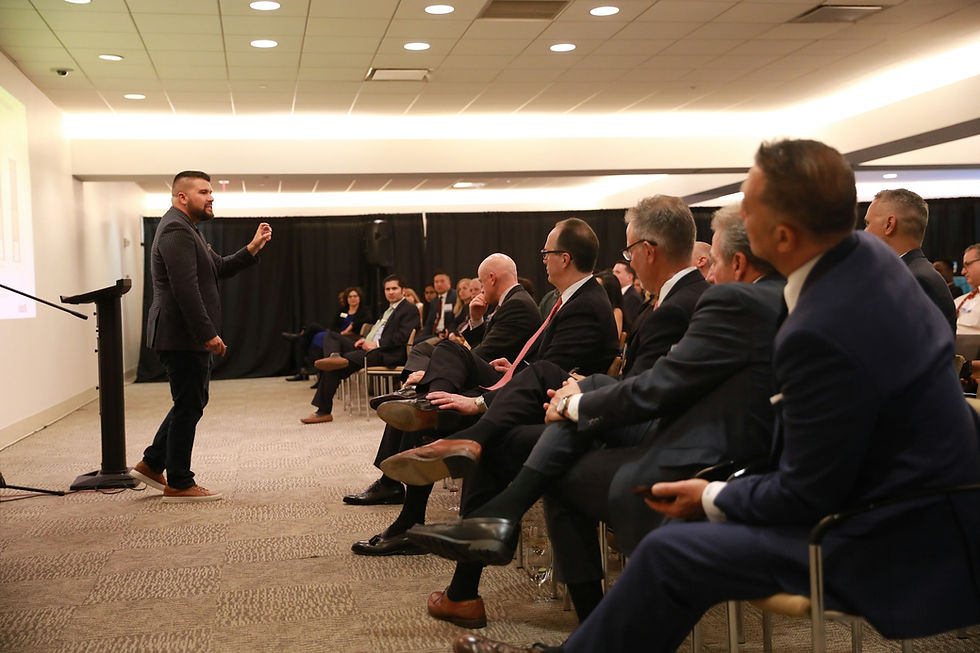Essential leadership skills for successful AI adoption
- Phil Vinall
- Jun 23
- 2 min read
Updated: Jun 25

The biggest hurdles when adopting AI aren't about the tech. They're actually about you - 𝗵𝗼𝘄 𝘄𝗶𝗹𝗹 𝘆𝗼𝘂 𝗹𝗲𝗮𝗱 𝗔𝗜 𝗮𝗱𝗼𝗽𝘁𝗶𝗼𝗻 𝗶𝗻 𝘆𝗼𝘂𝗿 𝗼𝗿𝗴𝗮𝗻𝗶𝘀𝗮𝘁𝗶𝗼𝗻?
A report from 𝗠𝗰𝗞𝗶𝗻𝘀𝗲𝘆 said, "The biggest hurdle to success [with AI] is leadership." And it’s a common theme in other findings. 𝗠𝗜𝗧 𝗦𝗹𝗼𝗮𝗻 𝗠𝗮𝗻𝗮𝗴𝗲𝗺𝗲𝗻𝘁 𝗥𝗲𝘃𝗶𝗲𝘄 (April 2025), found that 91% of top data managers said that "team challenges and managing change" were the main problems holding them back with AI.
For Kiwi businesses, getting AI working well isn't just about buying new software or hiring a tech guru. It's about how you, as the leader, tell the story of AI, get your people ready, and weave it into your unique business.
🎯 𝗬𝗼𝘂𝗿 𝗿𝗼𝗹𝗲 𝗶𝗻 𝗹𝗲𝗮𝗱𝗶𝗻𝗴 𝗔𝗜 𝗮𝗱𝗼𝗽𝘁𝗶𝗼𝗻;
𝗦𝗵𝗮𝗿𝗶𝗻𝗴 𝘁𝗵𝗲 𝘃𝗶𝘀𝗶𝗼𝗻: If you don't have a clear idea of why you're bringing in AI, or what you want it to achieve, your efforts can end up all over the place. As 𝗖𝗼𝗱𝗲𝘄𝗮𝘃𝗲 pointed out (May 2025), "AI actually helps the business when the top leader leads the way." Your team needs to understand why and how AI is coming into your company.
𝗧𝘂𝗿𝗻𝗶𝗻𝗴 𝘄𝗼𝗿𝗿𝗶𝗲𝘀 𝗶𝗻𝘁𝗼 𝘄𝗶𝗻𝘀: It's fair enough for people to worry about AI taking their jobs. But staff are often less scared of AI itself, and more worried about how it will change their daily work, especially when things aren't clear. This is where your leadership is crucial. When you show that AI is here to help people and not replace them - it changes everything. For example, 𝗠𝗶𝗰𝗿𝗼𝘀𝗼𝗳𝘁'𝘀 own studies (April 2025) found that staff using an AI Copilot, saw a 10-20% boost in getting things done and 68% felt happier at work. It helped free them up for more interesting, important (and valuable) work, and boosted their confidence in their future.
𝗟𝗲𝗮𝗱𝗶𝗻𝗴 𝘁𝗵𝗲 𝗷𝗼𝘂𝗿𝗻𝗲𝘆: Bringing in AI means some changes in the workplace. You need to be the kind of leader who can guide your team through this. You can do this by setting clear expectations, letting them try out new things, and building trust. When you, as the leader, actively share exploration of AI and its benefits, you create a workplace where your team sees it as a helpful partner, not something to be afraid of.
Adopting AI is less about a tech race and more about a thoughtful, people-focused journey. For Kiwi businesses, this means looking beyond the gadgets and truly focusing on your team and your style of leadership. When you, the leader, are strong and understanding, your AI plans will have a clear purpose, get results, and grow right alongside your business.
What's your biggest question or fear about leading AI adoption within your business? I'd really love to hear your thoughts in the comments below.

Comments